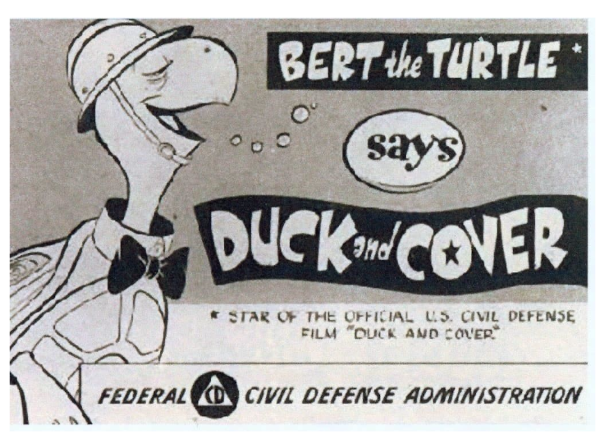Duck & Cover! Uncovering Radio Relics of the Cold War

Take a moment to recall your Dad's all-time favorite car. That's right — his epic 1958 Buick Roadmaster. You might remember how he lovingly washed and waxed that car every Saturday afternoon, its AM radio religiously tuned to Milwaukee Braves baseball. I will forgive you if you can't exactly remember that radio's dial. But there were some interesting icons on there — two little triangles. Those, my friend, are signposts in the historical timeline that delineates The Cold War.
Ah, the 1950s. The United States and the Union of Soviet Socialist Republics (USSR) were staring down one another, seeing who would blink first. During that period, it was essential for citizens to have, or at least believe they had, a chance at surviving a nuclear war. For example, kids were supposed to hide under their school desks. Personally, I never took much stock in that technique. Although the town where I lived was small and seemingly inconsequential in the struggle for world domination, it also had a factory that made a component that was vital for the construction of Polaris missiles. I was pretty sure that we were on the Kremlin's target list, and that my desk, even though it was oak, wouldn't do diddly. Ah, what fond memories.
Which brings us to those triangles on the AM radio dial. Those were CONELRAD (CONtrol of ELectronic RADiation) markings, located at 640 and 1240 kHz. The plan was this: Before Rusky warheads started to rain down, all U.S. radio broadcasts would be suspended, the idea being that the enemy might use those broadcasts as homing signals to major cities and other targets. However, although the rest of the dial was silent, alarmed citizens could tune into the CONELRAD frequencies to hear emergency broadcasts, beamed out at a power level high enough to be received, but presumably low enough to prevent homing. To further stymie homing, the locations of the CONELRAD transmissions were repeatedly changed. The Cold War encouraged people to be clever.

The plan was conceived in 1951, and starting in 1953, all new AM radios were required to have the emergency markings on the dial. The mandate was halted in 1963. Thus, as I noted, the radio in your Dad's Buick, bearing those markings, is an authentic Cold War relic of a time that came and went. But, of course, paranoia never sleeps. CONELRAD was replaced by the Emergency Broadcast System (EBS), which in turn was superseded by the Emergency Alert System (EAS).
Now, Armageddon is serious business, so mutually assured destruction should only be practiced by trusted authority figures. Those figures also have the power to make various things legal, or illegal. For example, if you are a broadcaster, it is illegal to indiscriminately play a particular sound. Yes, you heard that right. Broadcasters can't fool around with a certain sound — a sound associated with nuclear war. In particular, we are talking about a two-tone sinewave signal comprising 853 and 960 Hz.
As you might have guessed, we are talking about the Attention Signal: that disharmonious sound that was designed to clear your mind and focus your attention to the matter at hand — namely, surviving nuclear annihilation. If you're still not sure what sound I am referring to, this will jog your memory: This is a test. This station is conducting a test of the Emergency Broadcast System. This is only a test. [Attention Signal] If this had been an actual emergency, you would have been instructed where to tune in your area for news and official information. Much like the Beefaroni commercial, the Attention Signal is a sound that once heard, you just can't unremember it. Which, of course, is the point.
Although the EBS was often used for civil emergency and severe weather messaging, thankfully, it was never used for a nuclear emergency. However, once in 1971 it was accidentally activated, instructing stations nationally to cease regular programming — but that's a story for another day. In any case, as you can imagine, the government doesn't want the Attention Signal to be used lightly. Rather, it wants that sound to be forever, singularly, serious. That is why it is illegal to broadcast that sound unless it's an actual emergency. I'm not kidding. Don't do it.
In conclusion, this magazine is conducting a test. This is only a test. If this had been an actual Signals column, you would have been instructed to duck and cover under your desk, and tune to the little triangles on your AM radio dial.
Very good, children! Three seconds flat!
Thank you, Miss Boswick. You taught us well.
Ken C. Pohlmann is an electrical engineer specializing in audio topics as a consultant and writer. He is Professor Emeritus at the University of Miami.





























































